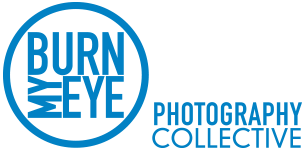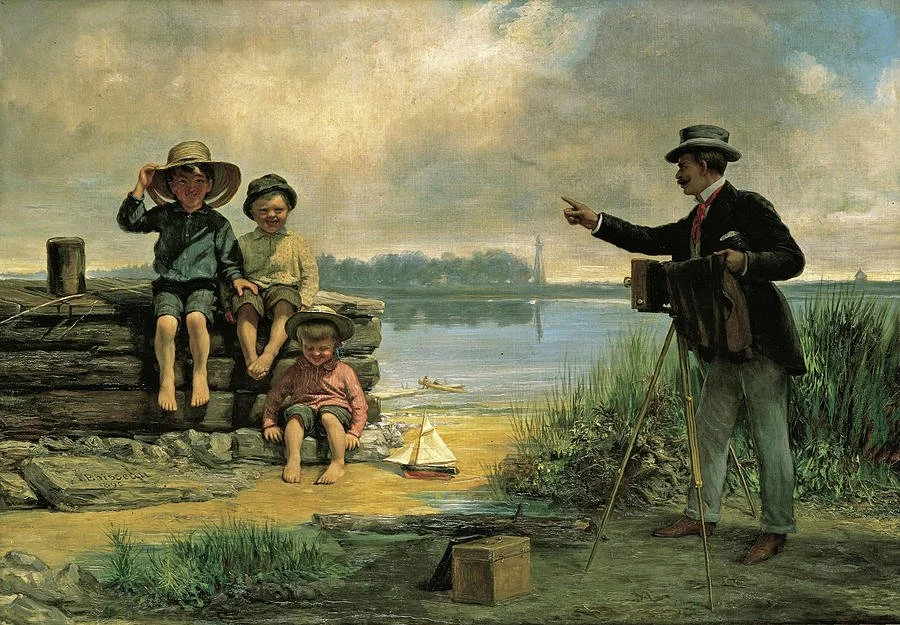Egography
ego
/ˈiːɡəʊ,ˈɛːɡəʊ/noun
a person's sense of self-esteem or self-importance.
Street photography has become known as a divisive subject, yet it seems that the arguments both for and against it have become even more polarized lately, criticized as being both invasive and exploitative even as it is defended as personal freedom of expression.
Burn My Eye’s T.C. Lin asks: What has changed?
Numerous discussions of the practice have been popping up on social media platforms such as Twitter, where one can come across diatribes centered around the evils of what is being called 'toxic' street photography; the practice of Bruce Gilden, described as running around rudely violating the personal space and 'rights' of hapless pedestrians with his closely held flash and brusque New York attitude, is often brought up as an example. Garry Winogrand is also criticized for his admittedly questionable “Women are Beautiful” work. Many speakers state the remedy to this state of affairs can only be first engaging with one’s subjects before any photography can take place, which would seem to negate the possibility of truly candid photography unless a great deal of time is spent becoming familiar with all involved, at which point it would then become pure documentary work. The work these critics point to as “ethical street photography”, and in many cases the work they themselves produce, is however more akin to staged portraiture, often photos of people standing on a street, staring blankly at the camera, many of them posing.
While some of this kind of photography can be interesting, much of it seems to be more about satisfying the photographer’s ego than the people being photographed. And the photographers themselves, satisfied that they got the shots they had planned, don’t even seem to be aware of nor care about this limitation, let alone the degree to which they have inserted themselves into the work at the expense of their subjects.
Of course, all photography is about the photographer to some extent. But in the course of such an interaction between photographer and photographed, the demand placed upon the subject to react to the photographer's presence according to whatever social contract applies removes that subject from their original purpose and authentic emotional state. It wrests their attention to the lens and the performative act of 'being photographed.' When viewing such work, I can't help but wonder what the photographer interrupted, what these people had been doing, what they’d been thinking before the photographer called their attention to them: “Hey can I take your picture? Could you stand there? That’s it.” The insistence that a subject acknowledges the photographer's presence and purpose, then acquiesces to their requests - rather than making a photograph respectfully and without intruding - could almost be bordering on narcissistic.
On the other side of this debate, of course, you have what I’d refer to as the “street bros”, who are quite vocal about expressing their right to “shoot” and “capture” strangers on the street. To them, as they stride down the thoroughfare with GoPros recording their safari adventure for their YouTube channel and TikToks that will no doubt be accompanied by fast-paced percussion music in their videos, street photography is an almost vindictive, chest-beating pursuit, getting as close and aggressive as possible. One of these guys (and yes, it seems to always be guys), popped up in a Flickr street group the other day, slamming anyone with the view that the feelings of one’s subject should be considered: “Enough said: street photography is a harsh genre and not for the faint hearted,” he posted. “You must be committed to the genre and retain a stiff upper lip when it comes to snowflakes and their feelings…these snowflakes will always find me, and a bunch of others, ready to confront them and put them in their place.” The use of the term ‘snowflakes’ is quite revealing here, and reeks of the kind of toxic masculinity and straight-white-male entitlement that accompanies the subjugation of others, fuelled by an egocentric worldview and lacking human empathy.
“…the demand placed upon the subject to react to the photographer's presence according to whatever social contract applies removes that subject from their original purpose and authentic emotional state. It wrests their attention to the lens and the performative act of 'being photographed.'“
I’ve only run into a few such individuals myself. Again, while there is potential for interesting results, the work produced tends in most cases to be rather sloppy, jarring, and lacking contemplation. It seldom says anything except, “Look at me!” But as much as this behaviour is described as being fundamental to street photography, it doesn’t correlate with the majority of photographers I have encountered.
Perhaps, as dichotomous as these two extreme positions of “street photography should be banned” and “street photography should be practised ruthlessly” may seem, these two approaches could be said to be essentially about the same thing: the photographer’s ego-driven urge to impose themselves into the work, making the purported subject a secondary consideration.
The obvious reason for this migration towards these particular binaries is the desire to invoke public perception: The kind of photos that get attention these days on social media tend to be straightforward, obvious pieces that immediately hit the viewer over the head; after all, they only have a fraction of a second before said viewer swipes on past on their tiny screen, and these days attention is capital. Thus, details, subtlety and contemplation have receded from our template.
That street photography is being boiled down to two such unappetising choices isn’t just depressing, it’s a gross misrepresentation of what was once seen as a much more diverse and complex genre of photography. There is an entire-disregarded world in between the two poles, a world encompassing multitudinous ways of engaging with subjects without imposing oneself onto them…photographs that are instead gentle, detailed, reflective and poetic observations without the need to either shove the crux of the content down the viewer’s throat for the 'Likes' or decry the ethical nature of one's practice with a diatribe on 'consent' as a corollary to quality. Instead, these two strikingly similar extremes have somehow come to bear false witness to the entire genre.
“…as dichotomous as these two extreme positions of “street photography should be banned” and “street photography should be practised ruthlessly” may seem, these two approaches could be said to be essentially about the same thing: the photographer’s ego-driven urge to impose themselves into the work, making the purported subject a secondary consideration.”
How did we get here? Perhaps one extreme created the other, and the two polemics have expanded and reinforced each other, overtaking more moderate and nuanced positions, strict black and white crowding out all the tones on the spectrum in between. Social media companies have thrust us into this paradigm to keep our attention riveted on the ensuing drama, which in turn keeps their bottom lines going up, and they’ll continue to do so as long as it can make them more money.
Might it just be that the deeper problem isn’t how we choose to photograph, but rather how the role of personal photography is perceived in the context of our ever-more tenuous connections with each other amid the constantly growing encroachment of 24/7 surveillance by the government/corporate realm trying to wrest such observational authority from our purview? This would explain the compulsion of the 'street bro' crowd to assert their 'rights' to take pictures, as well as the desire for other individuals to insist on the conscious, consensual participation of the subject in all pictures made in public spaces. Yet, in both of these binary counterpoints, the imposition of the photographer's ego erodes authenticity in the relationship between photographer, subject, and audience. Real photography should be about genuine connection, at its best conveying the human condition, but as we lose touch with each other, as social media paradigms encroach upon our sense of self, seeking to replace generations of actual social connection, we have lost much of any basic sense of trust we ever had.
Our true masks in these times are not made of fabric or paper, but of mistrust. As our connections have been siphoned off by media manipulation, blue checkmark validation vainly attempting to replace actual self-validation, our attention being redirected to bolster corporate bottom lines, our desperate urge to prop up our sense of self has overflowed into the space we previously reserved for others in our hearts and minds.
Observation with compassion and empathy may be cynically described as nearly impossible in such a state of affairs, driving the view that street photography can only be either inherently exploitative or a billboard for the ego, but it is vital that we keep it alive. Otherwise, it won’t just be photography that disappears from view, it will be our very humanity.

